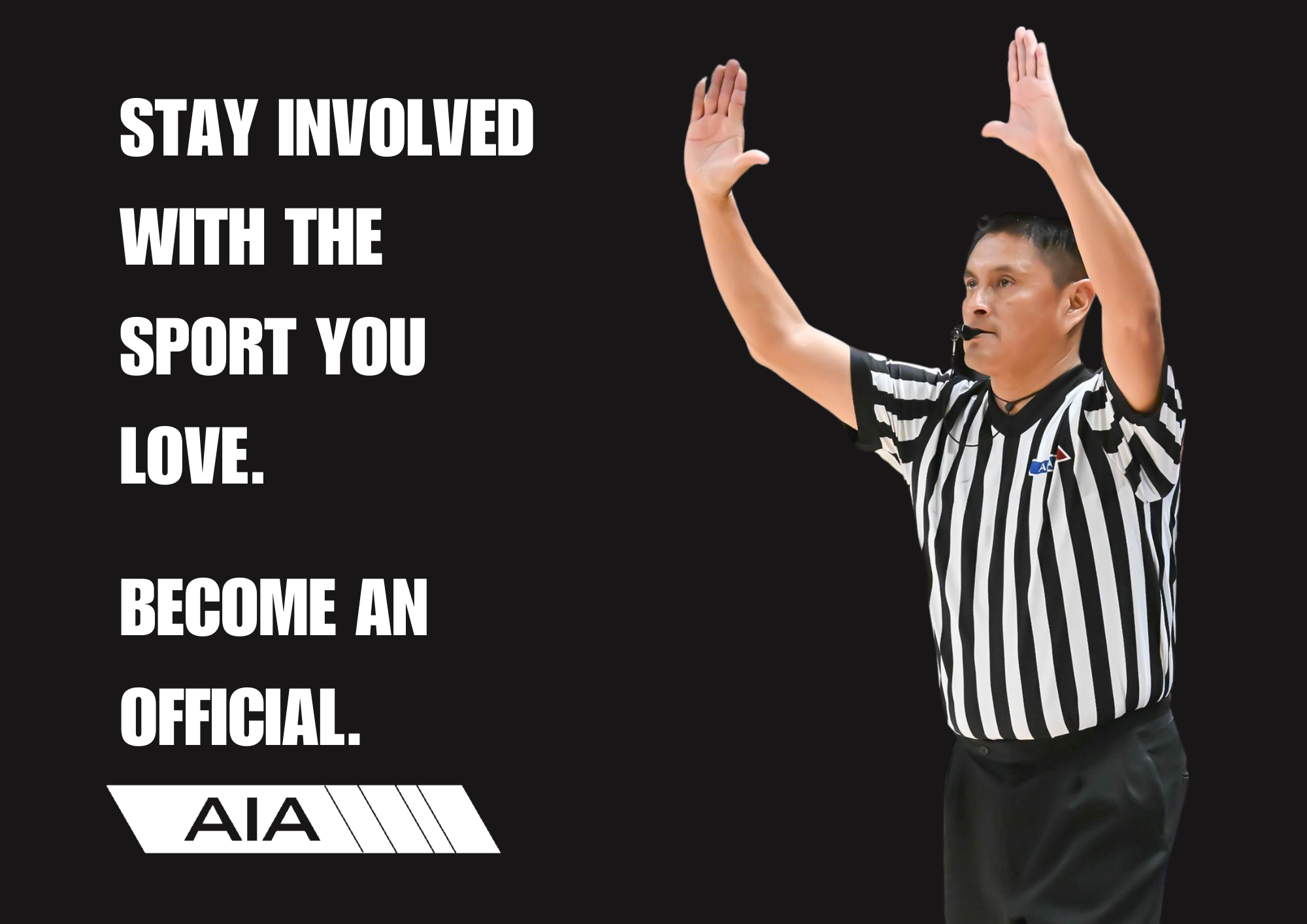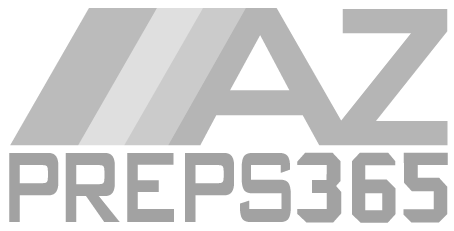Student-athletes adjusting to masks
February 11, 2021 by Jose Garcia, AZPreps365

Veteran Salpointe Catholic volleyball coach Heather Moore knew the risk.
So she issued a mask mandate for her team way before it became an Arizona winter season high school sports rule. Prior to the fall season's start, when vaccines were still a wish more than reality, Moore ordered her volleyball players to wear masks in 2020.
“It was a no-brainer for me,” the 34-year coach said. “Let’s do this.
“Some kids live with their grandparents. We wanted to keep everybody safe as well as those across the net. It’s a team sport.”
Some questioned the self-imposed Salpointe rule, but as the season progressed and Moore’s team settled in, the masks started to become part of the players’ uniforms.
At the conclusion of their 4A season, the Lancers celebrated on the court, masks and all, as state champions.
Fast forward to today, and every Arizona Interscholastic Association winter team is right where Salpointe was. But the one obvious difference is that masks are now mandatory for every team.
There was some initial pushback to the masks by winter athletes, but teams are beginning to adapt to them, just like Salpointe did. Reducing the risk of COVID-19 exposure was the goal of the AIA’s Sports Medicine Advisory Committee and the AIA’s Executive Board when they agreed to mandate winter sports student-athletes to mask up.
Athletes were willing to wear them if it meant they got to play. As cars line up for vaccinations that are now trickling in, masks and social distancing still offer the best form of protection for those who are waiting to get in line, medical experts say.
With COVID-19 metrics improving in the state, the AIA recently allowed parents to attend road winter season contests. But don’t expect more rule relaxing, especially the use of masks, in the near future.
Last week, Arizona still held the highest per-capita COVID-19 hospitalizations in the country. But Arizona’s hospitalization rates are trending downward, and they are lower than they were during the first wave in July.
Hospitalizations were a chief concern when a majority of the AIA’s SMAC members advised the AIA not to hold winter sports. In an abundance of caution, SMAC didn’t want indoor high school winter programs to contribute to the rising hospitalizing rates.
That led to the cancellation of the winter season by the AIA’s Executive Board in early January. But the 5-4 cancellation vote by the board didn’t keep high school coaches and athletes from planning how to compete in other arenas.
Athletic administrators believed it was safer to play in an organized state setting during the pandemic. That helped sway the AIA’s board to reverse course a few days later, allowing student-athletes to compete under the AIA umbrella after all.
One of the firsts steps the AIA then took was to implement a mask wearing rule, something over 20 other state associations had already adopted.
“The AIA has put together an outstanding (SMAC) team that is doing its best to navigate these complicated and historically unchartered waters,” said SMAC member Dr. John A. Kearney Jr. “We are trying to make a decision that will hopefully create the greatest good for the health, safety and well-being of our athletes and our communities.”
Among his duties in the state, Dr. Kearney is the Medical Director for the Arizona Sports Medicine Society and assistant clinical professor of medicine at University of Arizona.
He also has three kids who play high school and club sports. Playing sports has helped the emotional well-being of his children during the pandemic, he said.
To help lower the chances of exposure to COVID-19 for his family, his two youngest children didn’t play at first. But Dr. Kearney’s eldest, a junior basketball player, was allowed to compete in the offseason and during the high school season from the start.
“Since the pandemic began, I’ve tried to emphasize the fact that they should be grateful to have the opportunity to participate in any organized sport and to savor any chances they might get to do the sports they love,” Dr. Kearney said. “My children realize that COVID has been a tremendous public health tragedy and has also created terrible economic hardship for many during this time. So if a coach or a referee asks you to simply wear a mask or wash your hands, that should not feel like a burden.”
Dr. Kearney is also the team doctor for Centennial and Peoria High Schools and works with athletic trainers at nine other high schools as a sports medicine physician and partner at the CORE Institute, the biggest orthopedic group west of the Mississippi.
There was concern within the high school community when the winter season started that athletes, particularly those with medical conditions such as asthma, would have trouble breathing with masks on. There have not been documented cases of safety hazards with mask use in the current winter sports of basketball, wrestling or soccer, Dr. Kearney said.
“If wearing a mask seems to be exacerbating an underlying medical problem like asthma, then that condition is probably not being optimally managed and the athlete should visit with their physician because it may be unsafe to play even without a mask,” Dr. Kearney said.
Highland High School athletic trainer and sports medicine instructor Dave Hayward has served on the SMAC for 15 years.
On the day the AIA’s board allowed winter teams to compete, Highland’s teams hit the ground running with masks on.
“We had a little mild pushback by some parents and athletes with asthma and respiratory conditions, but honestly in the last couple of days, it didn’t last long,” Hayward said. “They’ve been very receptive.
“The kids are buying into it.”
Highland created some policies and procedures before the school year started, including a flow chart that keeps track of individuals who might test positive for COVID for contact tracing purposes.
“With the mitigation strategies put in place by the AIA, high schools are the safest place for athletes to participate in athletics,” Heyward said. “Also, many high schools in the state have athletic trainers who provide healthcare for the athletes. Having healthcare professionals such as athletic trainers on site provides that additional safety measure that protects our athletes in the state during these times.”
Because of the physicality and close contact of wrestling, there was concern that masks wouldn’t stay on.
Hayward said he’s seen the masks drop after contact but the wrestlers are mindful to reposition them immediately.
“It honestly hasn’t been that bad because the coaches have had us practicing in (masks) and doing extra cardio in them,” said Liberty High wrestler Tyler Sauter, a returning state champ. “So it’s really gotten us prepared. So I don’t think any of us struggled too hard with them because our cardio is already pretty good.”
None of Salpointe’s varsity volleyball players and staff tested positive for COVID-19 in the fall, but there have been game cancellations throughout the school year due to COVID-19.
Salpointe senior setter Brandy Kishbaugh shared how her team adapted to the masks after some initial hesitation.
“We didn’t want to wear them (masks), but they are important for our safety,” she said. “It’s what we had to do, so we were all very good about wearing them. It was hard to breath in them but toward the end we weren’t touching our masks as often and it was a lot more comfortable.”
More from Dr. Kearney
Advice on getting through this season: "To remain flexible and to understand that the data people are working with to make very challenging decisions is always changing and is very imperfect data to work with. When it comes to making decisions about COVID, athlete safety, and public health – we are taking into account what we think we know about the complex fields of the epidemiology of the disease, exercise physiology, social psychology, as well as trying to predict actual human behavior in the real world.”
On wearing masks: "Based on the best available information to date (although there is not as much high quality data as we would like), I absolutely agree with CDC and American Academy of Pediatric Guidelines that recommend use of simple masks during practice and competition for youth athletes during the height of the pandemic. When used correctly, I believe they decrease risk of COVID transmission in athletes and therefore decrease spread in the community – especially with indoor sports such as basketball. Unfortunately, some athletes will struggle getting used to wearing them, but most adapt very quickly.
"Good studies on the effects of masks on heart and lung function are extremely challenging to do and it is difficult to duplicate “real world” scenarios in these studies. If there is a small decrease in oxygenation it seems negligible and similar to training at higher altitudes and does not seem to be unsafe, although it may make an athlete feel more easily winded. Most athletes who feel “out of breath” with masks on are likely taking more rapid shallow breaths similar to acute anxiety or the beginning of a panic attack. People who feel “claustrophobic” in the mask are more prone to this as well. This can cause a temporary increase in carbon dioxide which is not dangerous but may cause you to feel lightheaded or dizzy. In extreme cases it could cause an athlete to pass out. Intentionally taking slower and deeper breaths can solve this problem. If wearing a mask seems to be exacerbating an underlying medical problem like asthma, then that condition is probably not being optimally managed and the athlete should visit with their physician because it may be unsafe to play even without a mask.”
On which mask to use: “Acceptable face coverings include non-medical disposable masks, fabric masks, and gaiters. The best mask is going to be the one the athlete feels most comfortable in out of those options. Athletes should also carry a spare mask to change into if theirs becomes damaged or too moist.”
On testing athletes: "In order for testing to be effective and “move the meter” in any significant way on sports teams, you really have to do daily or every other day testing and have ample access to the rapid tests like colleges and professional athletes do. Unfortunately, when the Sports Medicine Advisory Committee looked at this very question, we did not feel as though our communities currently had this testing readily enough available to make it feasible at the high school level."


